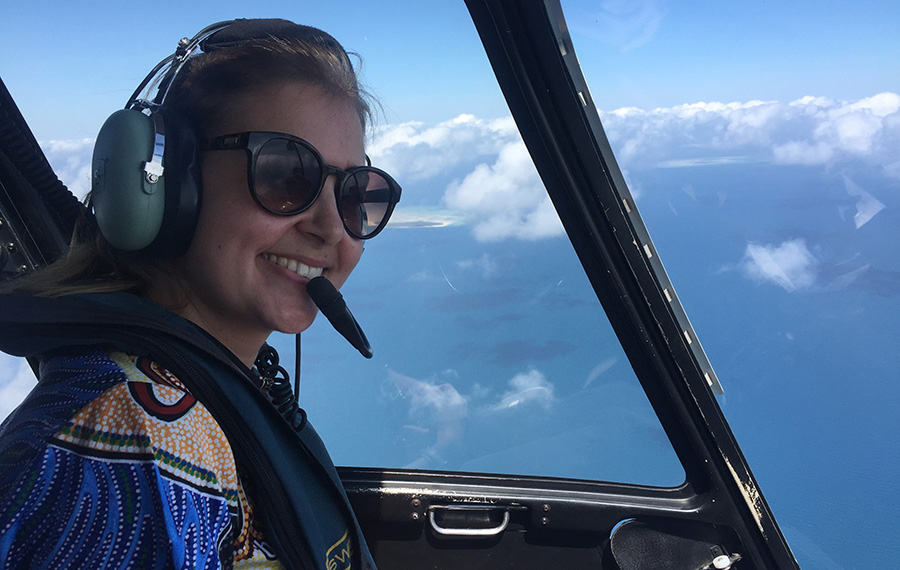Remote, tropical islands are the workplace of OTs in Housing
- Published:
- 31 May 2023 12:36PM
 For Occupational Therapists working in Far North Queensland, there’s no such thing as an ordinary day of work.
For Occupational Therapists working in Far North Queensland, there’s no such thing as an ordinary day of work.
Hollie from Aboriginal and Torres Strait Islander Housing – a part of the department which manages social housing for First Nations customers - travels by small plane, helicopter, or boat to reach the remote Torres Strait Islander communities. As an OT in Housing, one of her roles is to assess tenants in public housing who have a medical condition or disability and recommend modifications so they can remain in their home and live independently.
“One of the great privileges of our role in Housing is the opportunity to travel to remote and very beautiful parts of Queensland,” says Hollie.
Most of our customers are Aboriginal or Torres Strait Islander and each community we work in is unique with its own history. Each community has different traditional owner groups, different families, and may be subject to different cultural protocols. These factors influence how we deliver OT services. For example, being sensitive to Sorry business, where families will perform certain activities when a person has passed. We also consider the role and structure of families within our assessment, because for some families, it can be considered culturally inappropriate for people outside the family to provide carer support.”
“You get to know customers quite well,” Hollie says. “You are invited into people’s homes, and you get to see how people are living, what’s working and what’s not working. Together, you find a solution that will work for them, their family, and their community”.
“Many customers have complex medical histories. Some people might need housing assistance after being in Cairns hospital and wanting to return home. A lot of the remote properties are high set, especially in the Torres Strait Islands, so it can be difficult, for example, for people to return home and navigate stairs. We work closely with each person to find the best solution. For example, we might consider building in under properties to make an extra bedroom and accessible bathroom, or recommend a large ramp to help someone access their home.”
“In remote communities there are limited suitable properties to transfer families to. The family might also have a really strong cultural connection to the property or block of land. They really can’t move from that property, so we might look at major works to that property to make it suitable.”
Hollie and her OT colleagues have also made it possible for customers to have dialysis in their home.
“Normally you have to do dialysis three times a week and it takes the whole day. It’s a lot of time to travel to hospital and spend in hospital. Some people can’t remain in their community if they need dialysis, so we work with the hospital dialysis team to install special plumbing in their home to keep them in their community,” says Hollie.
Sometimes customers are not aware of the OT services available in Housing.
“I’ve told customers we can do modifications and they’ve been amazed that we can make those changes which means they can go home.”
Read more on OT jobs in Housing.